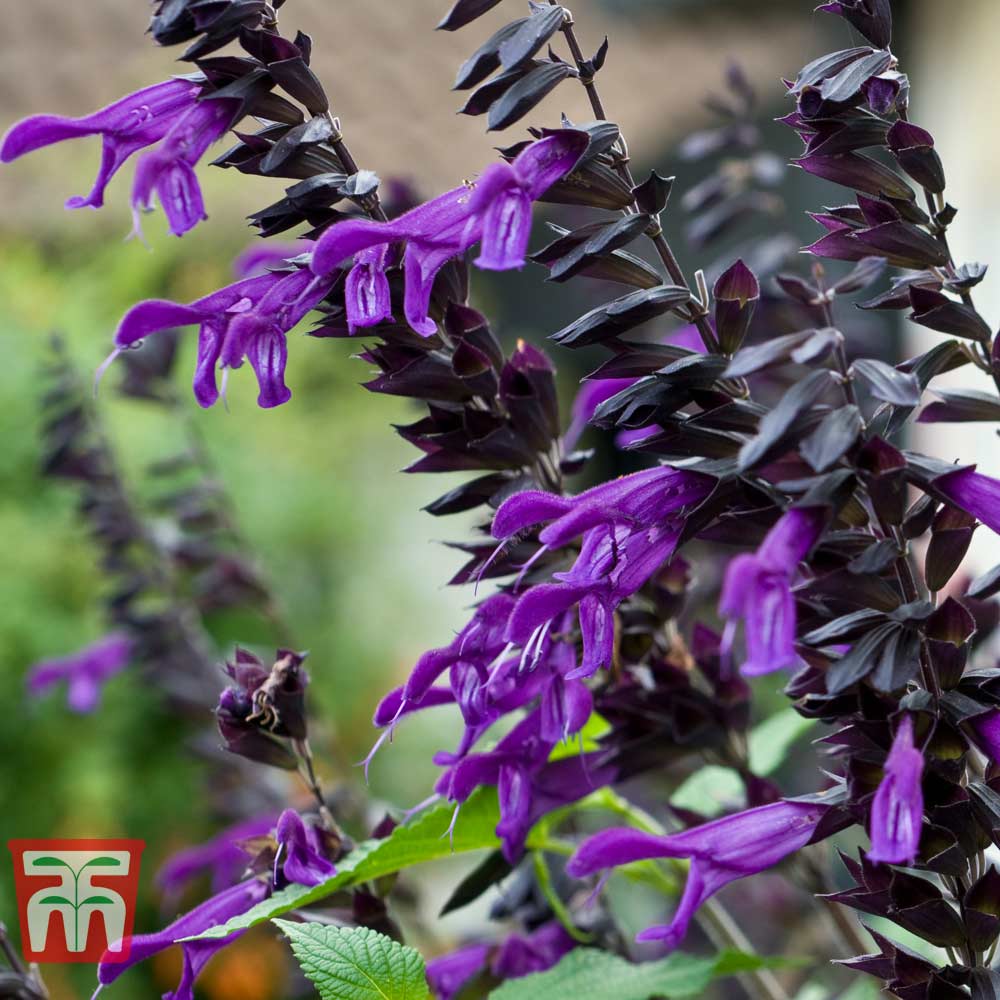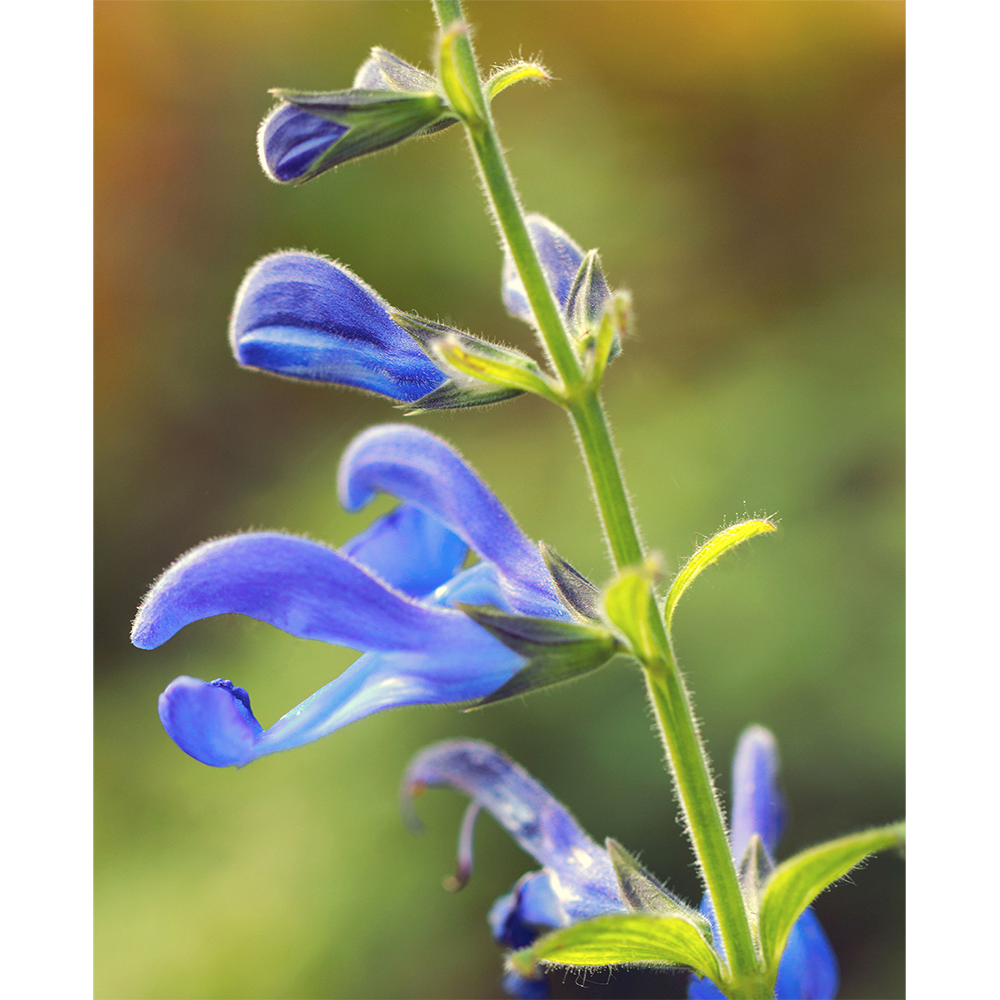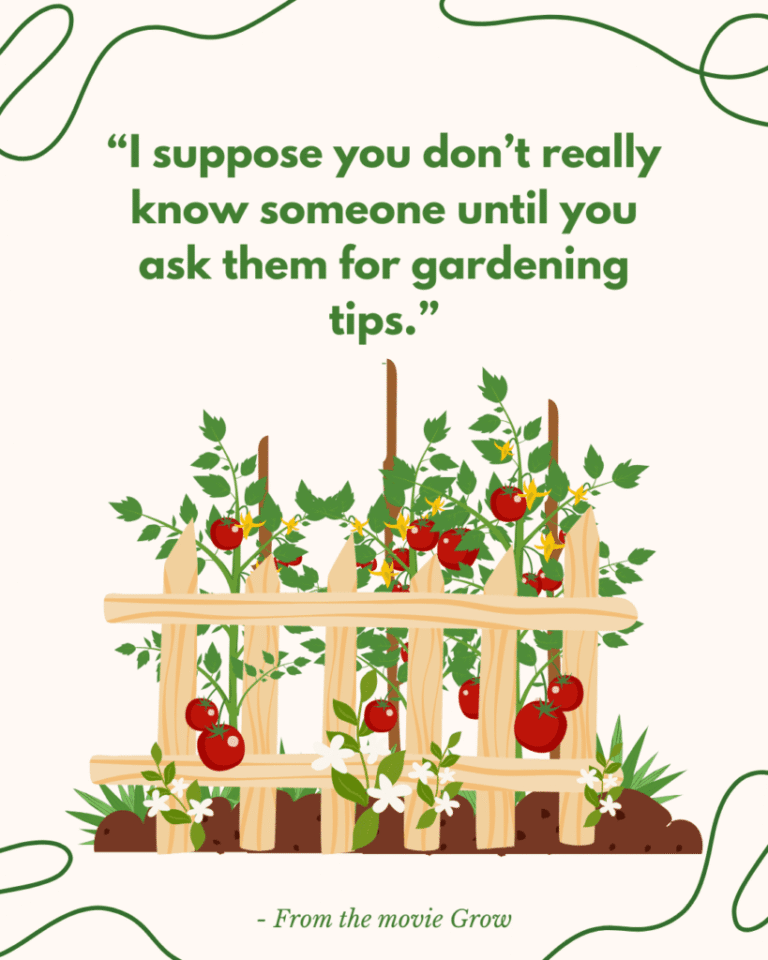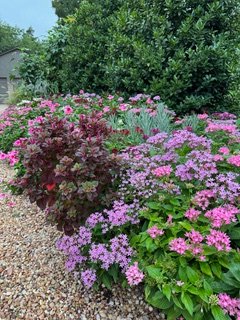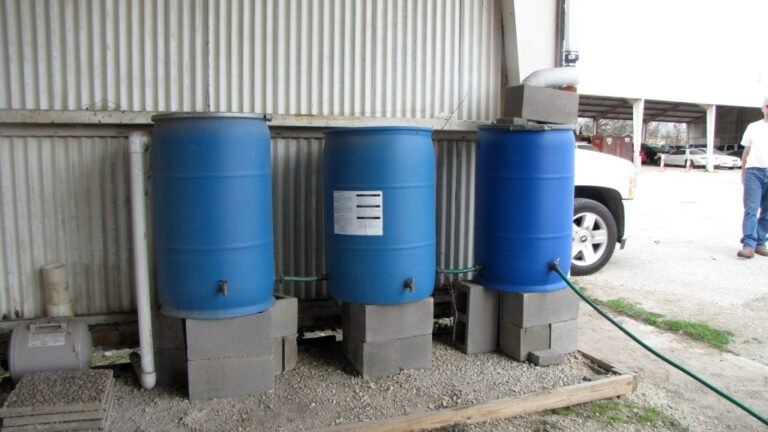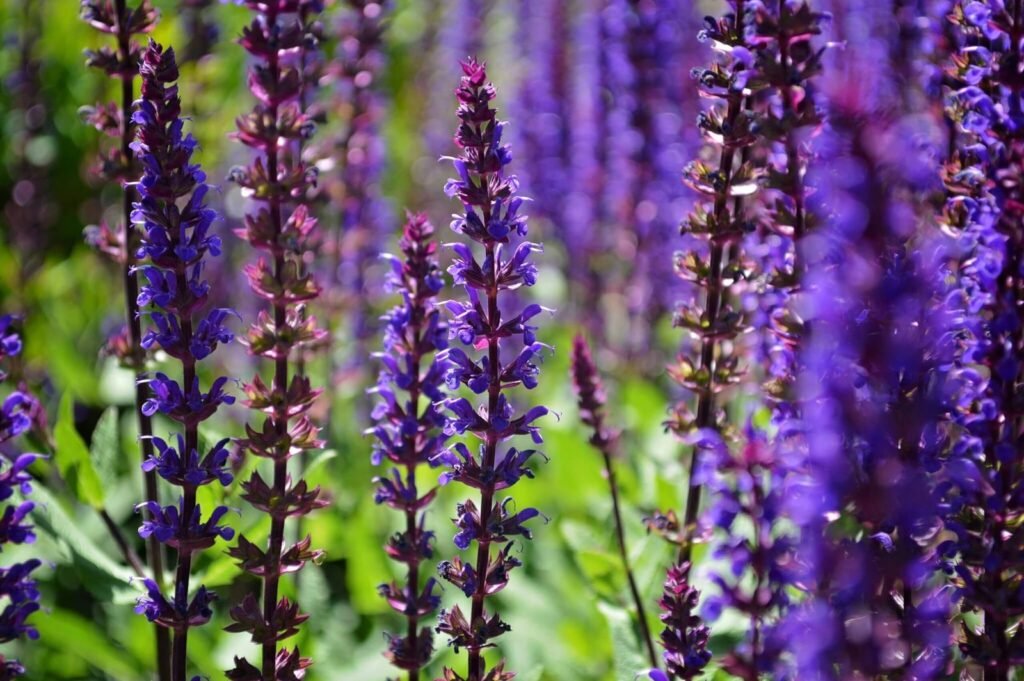
1Garden.com

1Garden.com – Grow Your Gardening Knowledge
Useful Information
Common Name: Sage
Latin Name: Salvia (genus name, with many species like Salvia nemorosa or Salvia officinalis)
Plant Type: Herbaceous perennial or annual (depends on the species)
Height: Typically ranges from 12 inches to 4 feet (30 cm to 120 cm), depending on the species
TLC Rating: Generally low to moderate; these plants are relatively easy to care for
Aspect: Full sun to partial shade, depending on the species
Planting Position: Border, cottage garden, or as a specimen plant
Sun Exposure: Full sun is preferred, but some species tolerate partial shade
Soil pH: Prefers well-drained soil with a pH of 6.0 to 7.0
Bloom Time: Varies by species, often from late spring to early fall
Flower Colour: Common colours include blue, purple, red, pink, and white, depending on the species
Suitable for Pots: Yes, many varieties are suitable for container planting
Good for Pollinators: Yes, they attract bees, butterflies, and other beneficial insects
Good for Cut Flowers: Yes, many species have long-lasting blooms that are good for arrangements
Pet Safe: Generally considered non-toxic to pets, but it’s always best to check specific species as some may cause mild stomach upset
Within the Salvia genus, there are numerous varieties with different characteristics. Make sure to check the specific needs and traits of the variety you are interested in.
Facts
Diverse Genus
Salvias belong to the genus Salvia, which includes over 1,000 species of flowering plants, commonly known as sages. This makes it one of the largest genera in the mint family, Lamiaceae.
Culinary Use
Some species of salvia, like Salvia officinalis, commonly known as sage, are used as culinary herbs. Sage has a strong flavor and is frequently used in cooking, especially in Mediterranean and Italian dishes.
Medicinal Properties
Various types of salvia have been used in traditional medicine for their potential abilities to treat ailments like sore throats, digestive issues, and inflammatory conditions.
Attractive to Pollinators
Many salvia species produce vibrant flowers that attract a variety of pollinators, including bees, butterflies, and hummingbirds, making them excellent choices for pollinator gardens.
Variety of Habitats
Salvias can be found in a wide range of habitats, from arid deserts to tropical rainforests. They are particularly well-adapted to well-drained soils and can thrive in diverse environmental conditions.
Ornamental Use
Salvias are popular in landscaping and garden design due to their bright and diverse flower colors, including shades of blue, purple, red, and pink. They can bloom throughout the growing season, adding vibrant color to gardens.
Perennial and Annual
While many salvias are perennial, some species are annual. They can vary significantly in height, leaf shape, and flower structure, ranging from low-growing ground covers to tall shrubs.
Aromatic Leaves
Many salvias have aromatic leaves that release a pleasant fragrance when crushed. This characteristic is especially prominent in culinary and medicinal species.
Popular Varieties
Some popular varieties of salvia for gardens include Salvia splendens (annual salvia or red salvia), Salvia nemorosa (wood sage), and Salvia guaranitica (Anise-scented sage), each bringing unique aesthetics and ecological benefits.
Drought Tolerance
Many salvia species are drought-tolerant and can thrive in dry conditions, making them suitable for xeriscaping and low-water gardens. This resilience helps them survive in various climates with minimal maintenance.
Complete Growing Guide
The complete growing guide for salvias covers every step from soil preparation to final harvest.
Salvias thrive in full sun and well-drained soil enriched with organic matter. Gardeners should check the local hardiness zone and orient beds in areas that receive ample sunlight.
The soil should be mixed with compost to ensure optimum nutrients and simulate the low-nutrient conditions salvias prefer. Those who prefer container gardening should choose a large pot with proper drainage and quality potting mix.
Calendar / Seasonal Checklist
Spring
Summer
Autumn
Winter
How, Where and When to Grow Salvias
How to grow salvias
Where to grow salvias
When to plant salvias
How to plant & care for salvias
How to grow annual salvias
How to grow half hardy perennial salvias
How to grow shrubby perennial salvias
How to grow herbaceous perennial salvias
Pest, Diseases and Common Issues
Gardeners may encounter various pests, diseases, and other issues when growing salvias. Due to their popularity, salvias are often subject to attacks by insects such as slugs, snails, aphids, and leaf hoppers, as well as problems like powdery mildew, drooping stems, and poor blooming.
Prevention and early treatment are key to mitigating these problems. Integrated pest management—using natural remedies like insecticidal soap and providing habitat for beneficial insects—commonly keeps pest populations under control.
Routine practices such as proper spacing, mulching, and pruning can help prevent fungal infections and mechanical issues like drooping or browning leaves.
Below are common issues encountered with salvias along with considerations and solutions for each challenge.
Slugs and Snails
Aphids
Leaf hoppers and Capsid bugs
Why is my salvia not blooming?
What is eating my salvia plants?
Why is my salvia falling over and drooping?
Why is my salvia turning brown or yellow?
What to Grow with Salvias
When planning a garden featuring salvias, it is beneficial to choose companion plants that share similar sunlight, moisture, and soil requirements.
FAQs
Will salvia grow in shade?
Will salvia bloom first year?
Do rabbits or deer eat salvia?
Can you grow salvia in pots?
Do bees and butterflies like salvia?
How fast does salvia grow?
How tall does salvia grow?
Are salvia plants hardy?
How to prepare salvia for winter?
Are salvia plants evergreen?
Are salvia plants poisonous to dogs and cats?
What plants go well with salvia?
What soil type is best for salvias?
Salvias require well-draining soil rich in organic matter. A mix of native soil, compost, and a little sand ensures excellent drainage and provides the nutrients needed for optimal growth while preventing root rot.
Can salvias tolerate drought conditions?
Yes, most salvias are highly drought-tolerant. Once established, they require minimal water and are ideal for xeriscaping. However, regular watering during establishment is key to developing a robust root system. After maturity, deep, infrequent watering is best.
How often should salvias be fertilised?
Salvias benefit from a balanced fertilizer applied in early spring and mid-summer during active growth. Over-fertilising with high-nitrogen products should be avoided as it can lead to excessive foliage at the expense of blooms.
What is the best method for pruning salvias?
Prune salvias after the main flowering period to maintain structure and encourage reblooming. Light trimming of spent flowers (deadheading) and removal of leggy stems promotes a bushier habit. For perennials, a more substantial trim in early spring can help remove winter damage and stimulate new growth.
Can salvias attract beneficial insects?
Absolutely; salvias are excellent for attracting pollinators such as bees and butterflies. Their nectar-rich flowers and aromatic foliage support ecological biodiversity and naturally deter pests.
Is it necessary to divide salvia clumps?
Dividing salvia clumps every few years can improve overall plant health, stimulate growth, and control overcrowding. This practice rejuvenates older plants, increases flowering, and helps prevent soil-borne diseases. It is best done in early spring or autumn when the plant is less stressed.
How long do salvias typically bloom?
Bloom duration varies by variety and growing conditions, but many salvias continue to bloom from late spring through early autumn. Deadheading spent blooms and maintaining optimal care routines can extend the flowering period, ensuring a consistent show of colour.
Popular Salvia Varieties
Shop Salvias
Final Thoughts
The post How to Plant, Grow & Care for Salvias first appeared on 1Garden.com and is written by 1Garden.com


